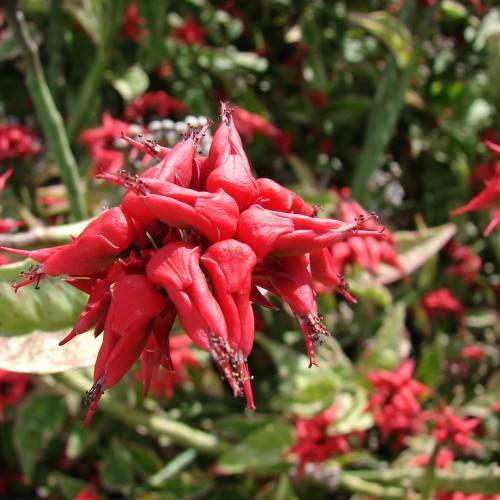
redbird flower
Pedilanthus tithymaloides
Cycle:
Perennial
Watering:
Average
Hardiness Zone:
9 - 11
Flowers:
Flowers
Sun:
full sun,part shade
Leaf:
Yes
Growth Rate:
Low
Maintenance:
Low
Salt Tolerant:
Yes
Thorny:
Yes
Tropical:
Yes
Care Level:
Medium
watering
The amount and frequency of watering for a redbird flower depends on the season and upon the plant's individual needs. During the growing season (fall and spring), redbird flowers should be watered thoroughly on a weekly basis, allowing the soil to dry out slightly between waterings. In the summer months, water the plants only when the soil is completely dry. During the winter, when they are dormant, water the plants thoroughly every 2 weeks or so. Make sure to keep an eye on moisture levels in the soil, and adjust your watering schedule accordingly.
sunlight
The redbird flower needs direct sunlight for 2-6 hours per day. It does best with several hours of bright, indirect sunlight, such as from an east-facing window, plus a few hours of direct sunlight. Avoid areas of intense, direct afternoon sun. Redbird flower needs consistent conditions to flower, so try to avoid sudden changes in temperature and lighting.
pruning
It grows well with minimal pruning, but trimming the plant regularly will keep it looking neat and help it to flower. Pruning should take place in late winter or early spring before new growth begins. Cut back any branches that have become too long or straggly or that are blocking pathways or walkways. Young plants should be pruned to encourage branching. This will produce a plant with more compact, bushier growth that will provide more blooms in the summer months. When pruning, try to cut branches at a outward facing bud. This will ensure that the plant branches in an outward, natural way. Trim off any spent flowers to encourage the production of new blossoms.
